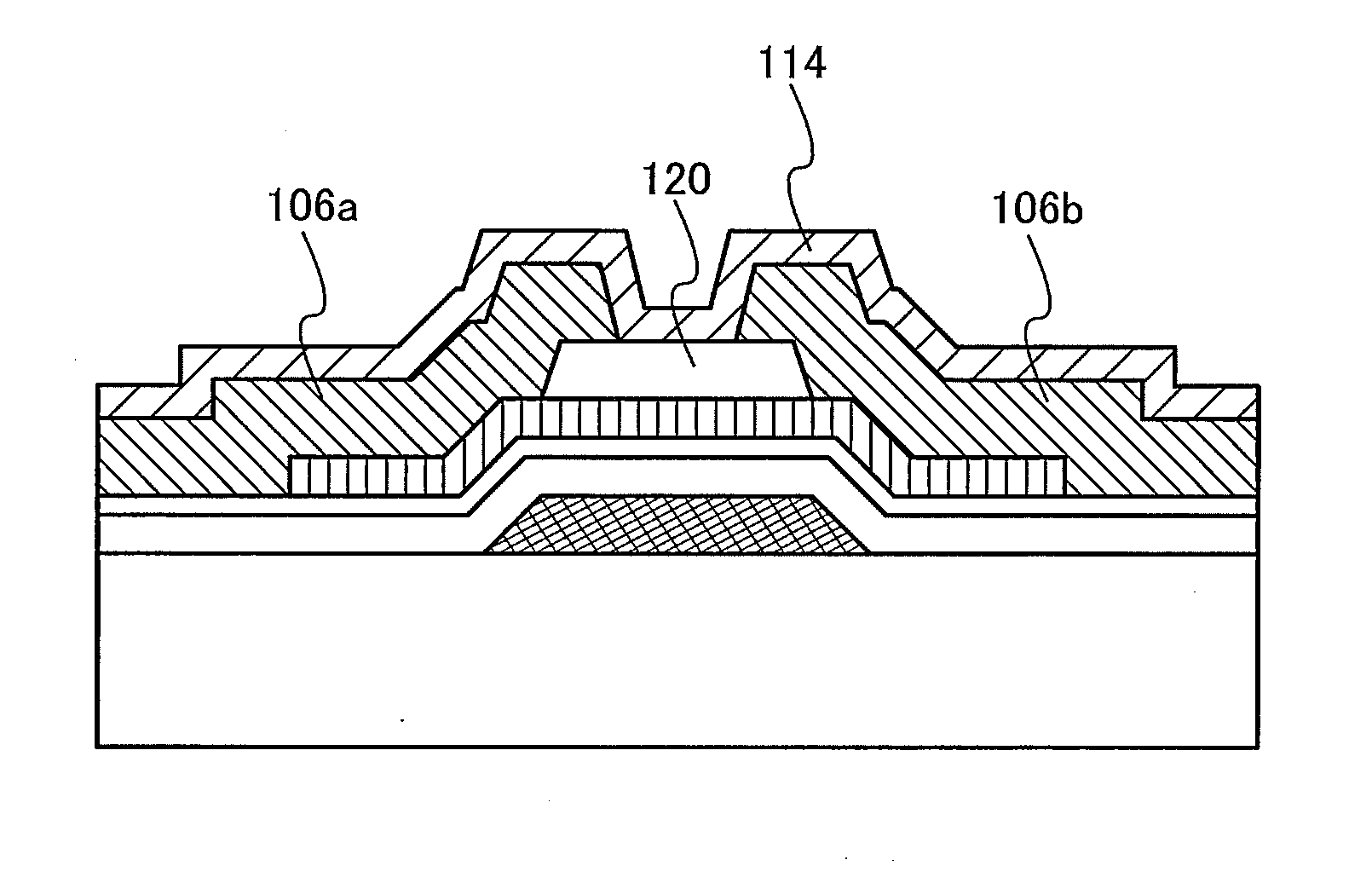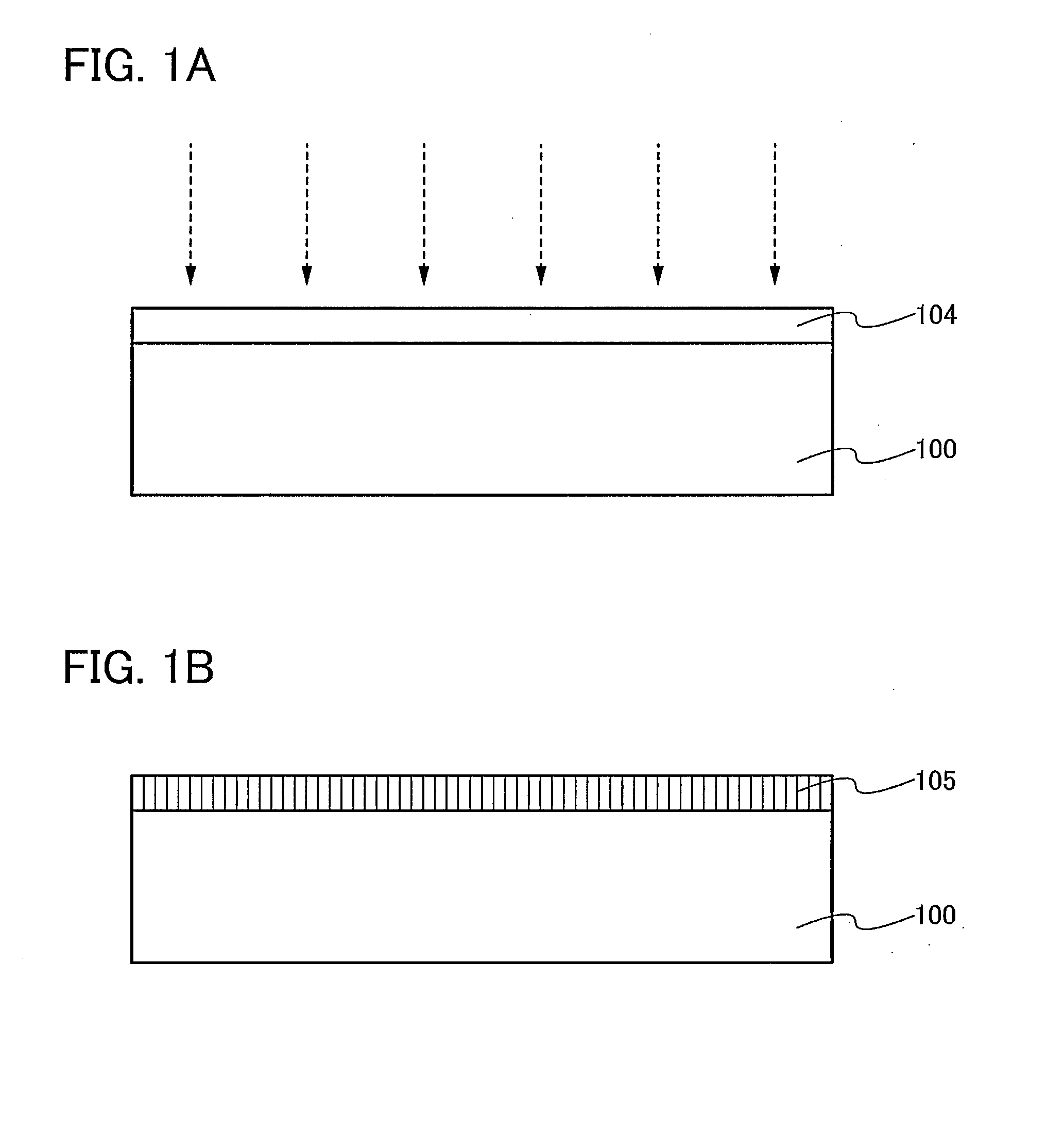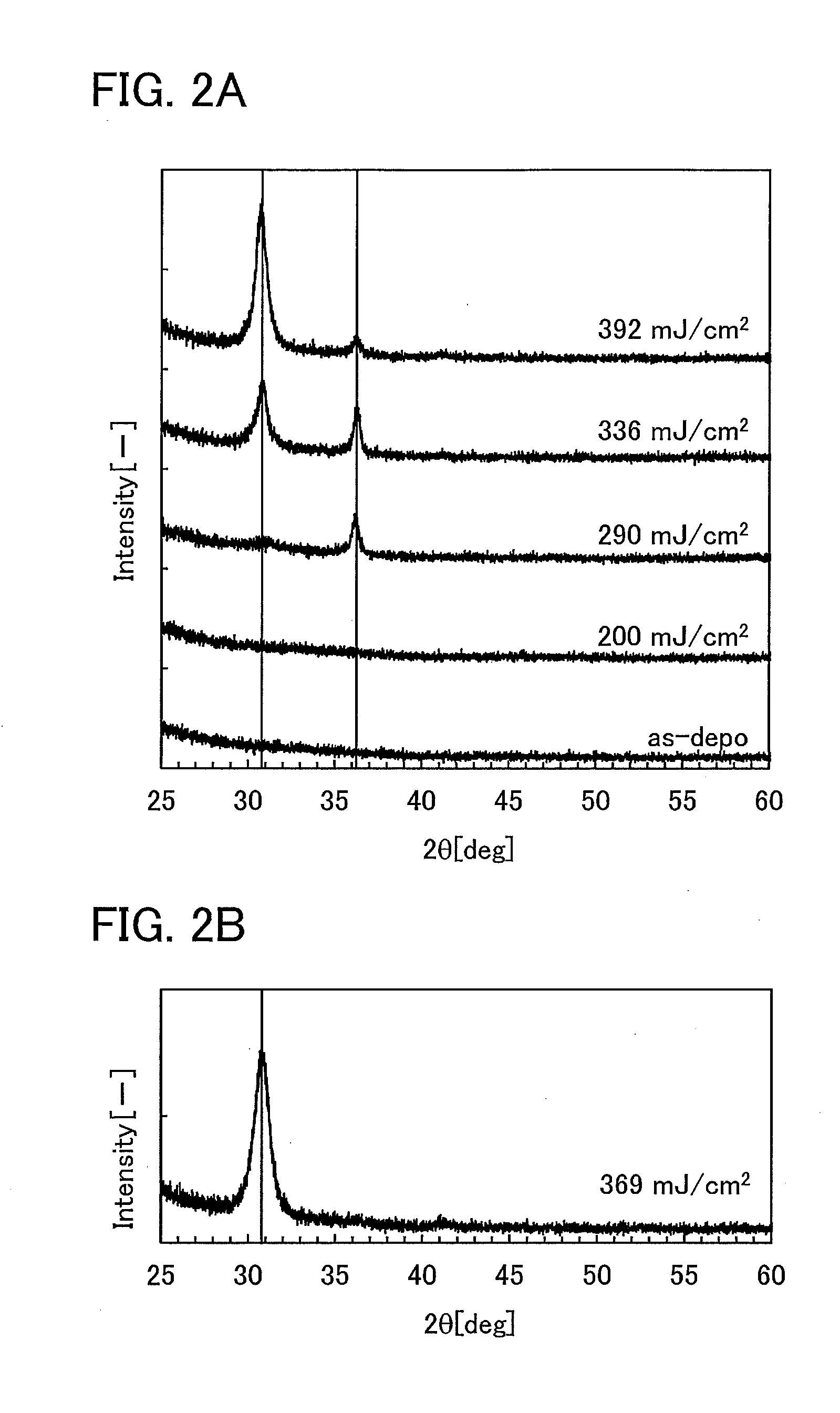Oxide semiconductor film and method for forming oxide semiconductor film
a technology of oxide semiconductor and semiconductor film, which is applied in the direction of semiconductor devices, electrical devices, transistors, etc., can solve the problems of incomplete depletion of channel region, inability to crystallize region near the interface with the base, so as to achieve the effect of improving the crystallinity of oxide semiconductor
- Summary
- Abstract
- Description
- Claims
- Application Information
AI Technical Summary
Benefits of technology
Problems solved by technology
Method used
Image
Examples
example 1
[0107]In Example 1, the attribution of a peak appearing at which 2θ was around 36° in crystallinity evaluation by an out-of-plane method using XRD was examined in detail.
[0108]Supposed planes to which a peak appearing at around 36° (2θ) is attributed are a (311) plane (2θ=35.7°) and a (222) plane (2θ=37.3°) in the case of an XRD pattern of ZnGa2O4 crystal with a spinel structure.
[0109]In order to cause a shift to a high-angle side in the (311) plane (2θ=35.7°), the lattice spacing needs to be narrowed. It is necessary for narrowing the lattice spacing to apply a high pressure. Thus, it is unlikely that the (311) plane is a plane having a peak at which 2θ is around 36°. On the other hand, when a Ga site in the ZnGa2O4 crystal is replaced with In, the lattice spacing on the (222) plane (2θ=37.3°) is expanded by In, and a shift to a low-angle side is caused. Thus, it is highly likely that the (222) plane is a plane having a peak at which 2θ is around 36°.
[0110]Cation radii of In hexaco...
example 2
[0121]In Example 2, atomic arrangement in cross sections of a surface layer and an inside of a nc-OS film irradiated with a laser beam was observed with a high-angle annular dark field scanning transmission electron microscopy (HAADF-STEM) and evaluated. A Hitachi scanning transmission electron microscope HD-2700 was used for the HAADF-STEM.
[0122]FIGS. 7A to 7C show atomic arrangement in a cross section of the surface layer of the nc-OS film. Note that FIG. 7A is a HAADF-STEM image, FIG. 7B is an enlarged view of a surrounded portion in FIG. 7A, and FIG. 7C shows a crystal structure model of InGaZnO4.
[0123]FIGS. 8A to 8C show atomic arrangement in a cross section of the inside of the nc-OS film. Note that FIG. 8A is a HAADF-STEM image, FIG. 8B is an enlarged view of a surrounded portion in FIG. 8A, and FIG. 8C shows a crystal structure model of ZnGa2O4.
[0124]According to FIGS. 7A to 7C, the cross section of the surface layer has the crystal structure of InGaZnO4. According to FIGS. ...
example 3
[0125]In Example 3, composition analysis of a CAAC-OS film and a nc-OS film that were In—Ga—Zn oxides were performed. Samples formed in this example are described.
[0126]First, a substrate was prepared. As a substrate of each sample, a quartz substrate was used. Then, an oxide semiconductor film (CAAC-OS film or nc-OS film) was formed over the substrate. The oxide semiconductor film was formed under the following conditions: a metal oxide target having an atomic ratio of In:Ga:Zn=1:1:1 (atomic ratio) was used as a sputtering target; argon and oxygen were supplied to a treatment chamber of a sputtering apparatus as a sputtering gas at flow rates of 30 sccm and 15 sccm, respectively; the pressure in the treatment chamber was controlled to 0.4 Pa; and a DC power of 0.5 kW was supplied. In addition, for formation of the nc-OS film, the substrate temperature at which the In—Ga—Zn oxide film was deposited was set to room temperature (25° C.). Further, for formation of the CAAC-OS film, the...
PUM
 Login to View More
Login to View More Abstract
Description
Claims
Application Information
 Login to View More
Login to View More - R&D
- Intellectual Property
- Life Sciences
- Materials
- Tech Scout
- Unparalleled Data Quality
- Higher Quality Content
- 60% Fewer Hallucinations
Browse by: Latest US Patents, China's latest patents, Technical Efficacy Thesaurus, Application Domain, Technology Topic, Popular Technical Reports.
© 2025 PatSnap. All rights reserved.Legal|Privacy policy|Modern Slavery Act Transparency Statement|Sitemap|About US| Contact US: help@patsnap.com



